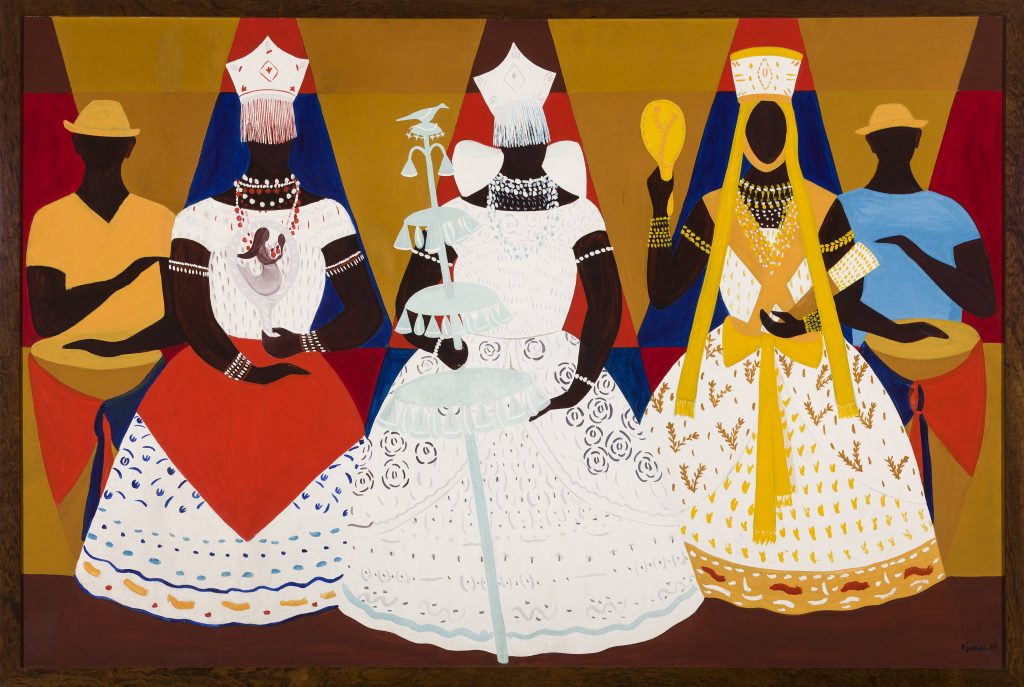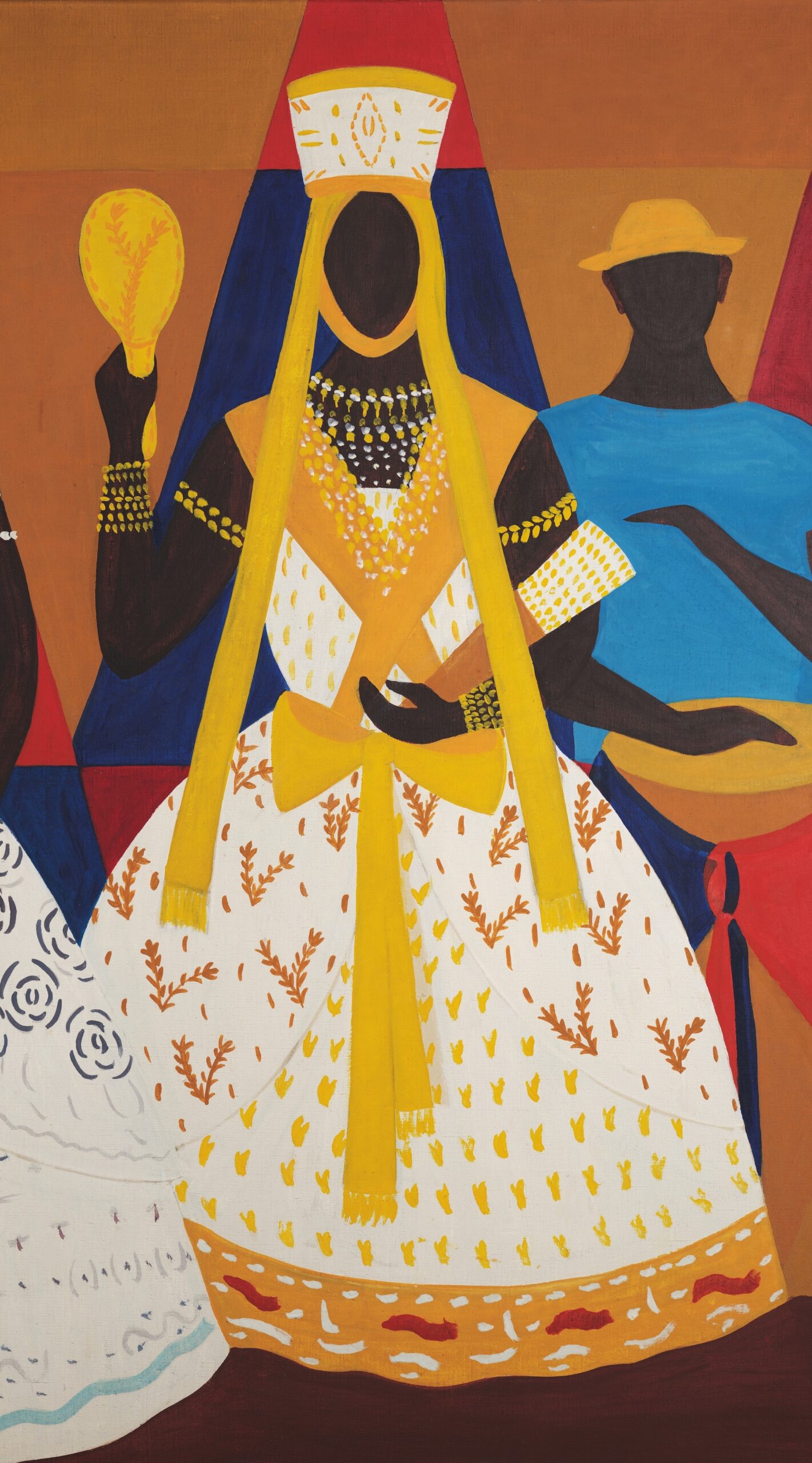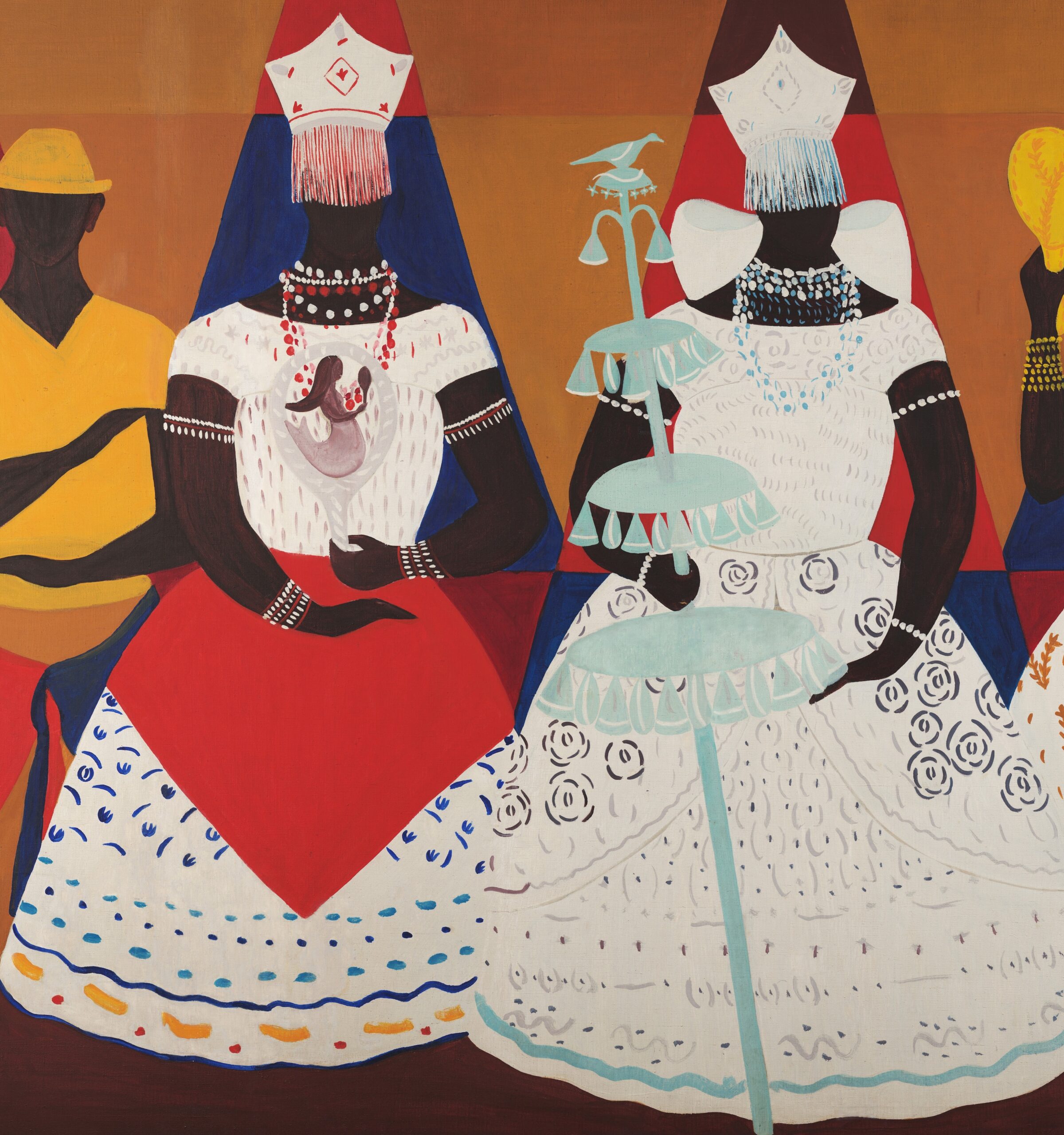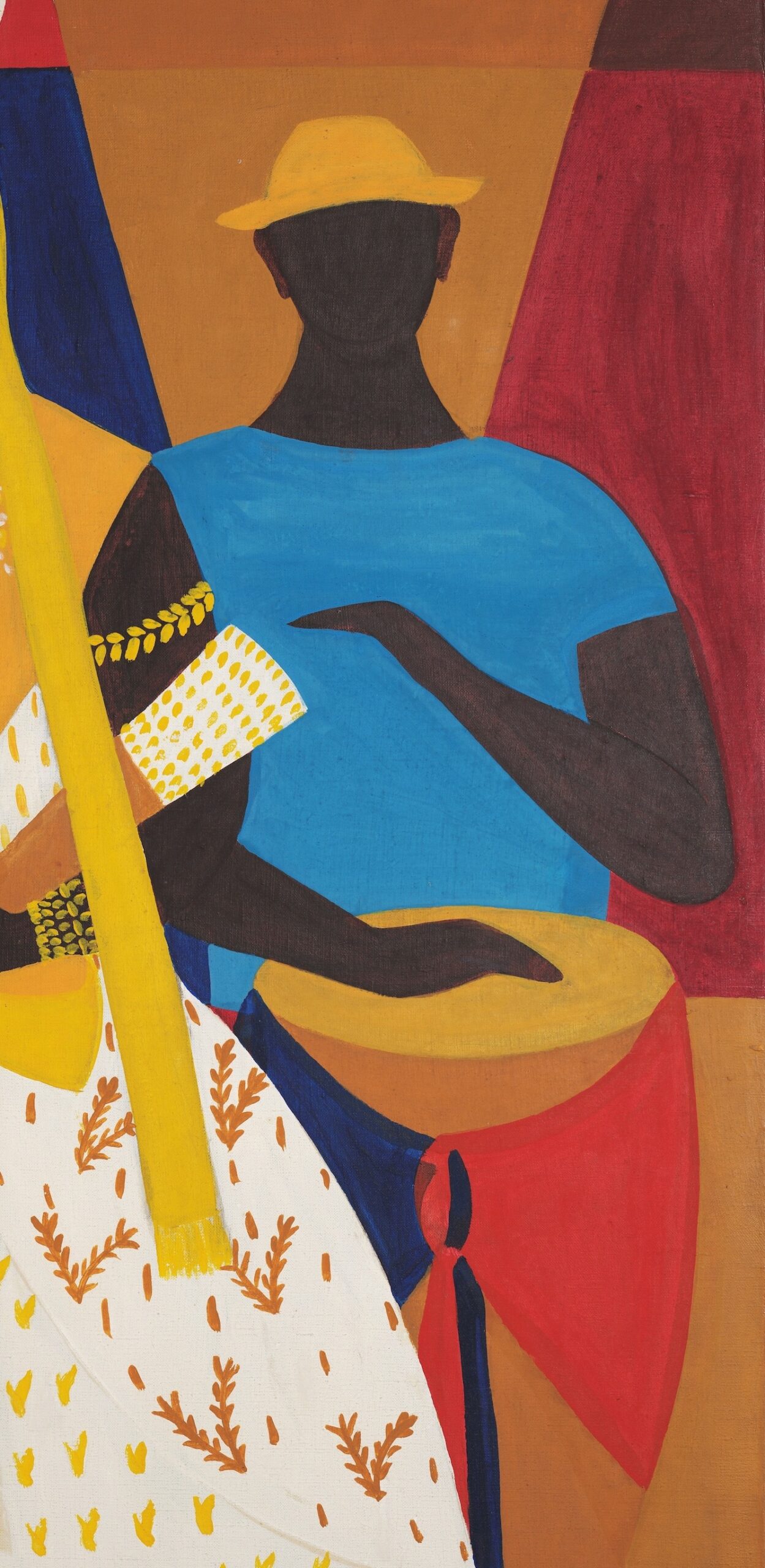Masterpiece Story: Dynamism of a Dog on a Leash by Giacomo Balla
Giacomo Balla’s Dynamism of a Dog on a Leash is a masterpiece of pet images, Futurism, and early 20th-century Italian...
James W Singer, 23 February 2025
17 March 2024 min Read
Djanira da Motta e Silva pictured a very unusual Holy Trinity made of three deities from the Afro-Brazilian Pantheon. They are accompanied by musicians playing drums to call ancient spirits and gods for their appearance here and now, on earth, to help the living, to ease their pain, and to increase their joys.

In the foreground, we see three orishas who are goddesses, holy spirits, and fundamental figures in Candomblé. It is a religious tradition which combines African beliefs of Yoruba, Fon and Bantu. It was brought by the slaves to the Portuguese colonies and developed especially in Salvador, in Bahia state. Each orisha represents a certain force in nature and is associated with certain foods, colors, animals, and days of the week.
Between 1516 and 1888, Brazil imported the majority of the slaves in the transatlantic trade. Only in the 18th century, around 1,7 million people were shipped against their will from Western Africa (mostly from today’s Ghana, Nigeria, Angola, Congo, Guinea, and Gabon). They represented different ethnic groups, languages, traditions, and religious beliefs. This cultural heritage survived centuries and is still alive in Brazil.

The first character on the left is Yemaya, in the middle there is Oxala, the last one on the right is called Oxum. Oxum (Oshun) is one of the most worshipped of the orishas. It’s a deity of the river and fresh water, luxury and pleasure, sexuality and fertility, as well as beauty and love.
The reference to Oxum can be seen in Beyonce’s Hold Up video. The musician, dressed in a yellow Roberto Cavalli gown, opens the door letting massive water spill outside. Djanira da Motta e Silva also painted Oxum in a yellow dress. The goddess hails to the viewer with the left arm.

Yemaya, in turn, is often identified with the Catholic Our Lady of Regla. Yemaya has maternal characteristics, she is a protective deity often depicted as a mermaid. She is responsible for everything about childbirth: conception, parenthood, child safety, love, and healing. According to the myth, when her waters burst, they caused a great flood which created rivers and streams. It also says that the first mortal people come from her womb. Djanira da Motta e Silva painted her on the left, with a mermaid emblem on the chest, dressed with red accessories. Beyonce also played an homage to Yemaya in her pregnancy photoshoot in 2017.

Oxala, in the center of the picture, resembles God the Father, the creator. He is considered to be the Father of Heaven and the creator of human bodies. He is the second son of Olodumare and was authorized by him to create land on the water under the sky. What is surprising is that Djanira da Motta e Silva painted Oxala as a woman.

Djanira da Motta e Silva captured in this painting the custom typical to festivities in Bahia. For the Candomblé music is essential. The role of rhythm and melody is to bring magic and spiritual forces to the room. The drums appease the orishas and hypnotize individuals participating in the ceremony. There are drummers shown in the background, who are playing for the goddesses.
The painting Três Orixás gives us a representation of the ritual of Afro-Brazilians celebrating their ancestry in a modern country, centuries after they were brought from their motherland to a new homeland.
Discover South American Art in the Museum of Solidarity “Salvador Allende” in Chile and in MnBA, Rio de Janeiro!
DailyArt Magazine needs your support. Every contribution, however big or small, is very valuable for our future. Thanks to it, we will be able to sustain and grow the Magazine. Thank you for your help!